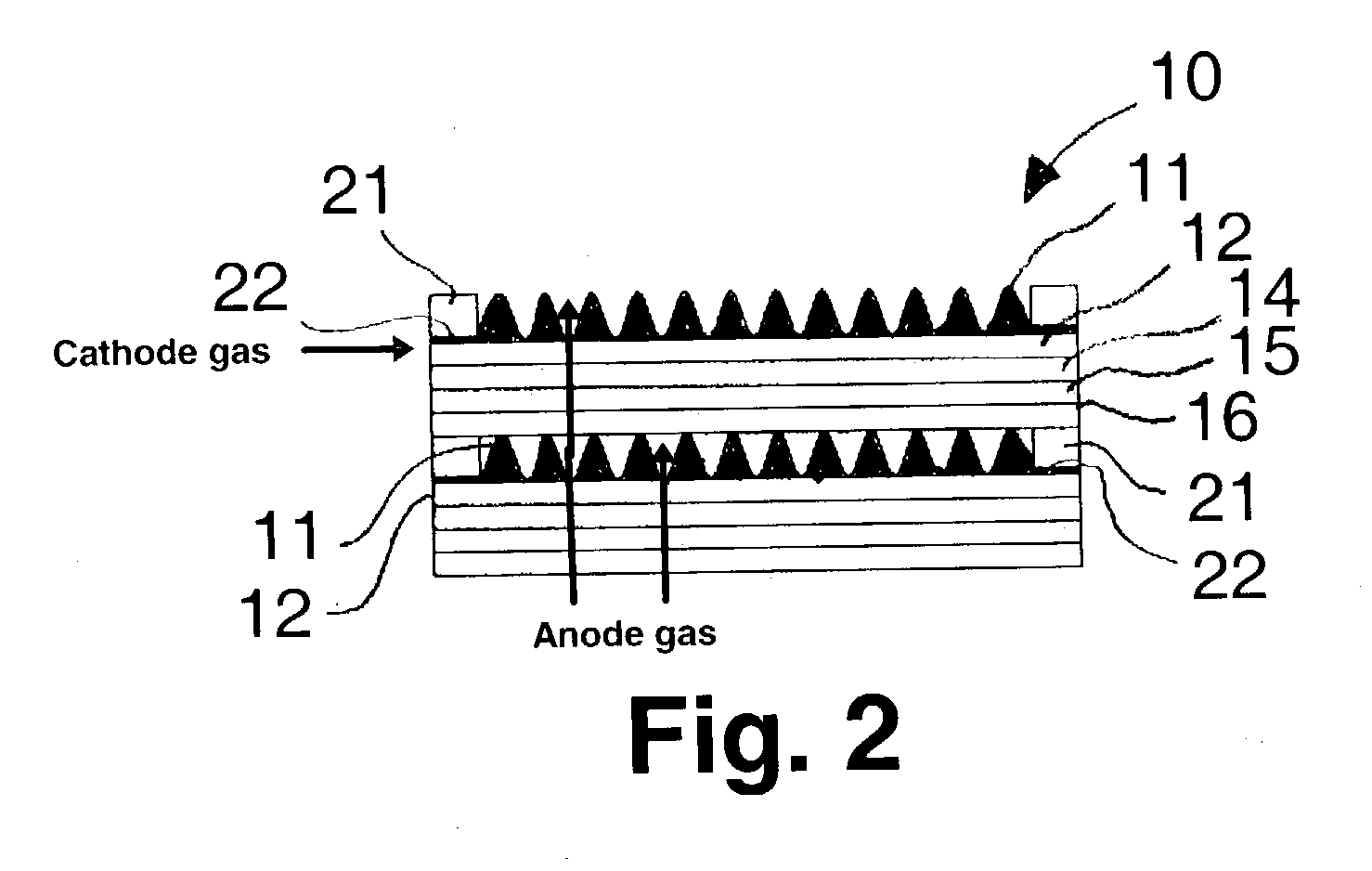Folded metal bipolar sheets for fuel cells
a technology of bipolar sheets and fuel cells, applied in the field of bipolar separator plates, can solve the problems of difficult engineering problems, close tolerances, and control of fuel cells, and achieve the effects of improving the efficiency of fuel cells
- Summary
- Abstract
- Description
- Claims
- Application Information
AI Technical Summary
Benefits of technology
Problems solved by technology
Method used
Image
Examples
example
[0030] The manufacture, assembly and operation of a bipolar separator plate in accordance with one exemplary embodiment of this invention starts with a thin, flat sheet of metal, having a thickness in the range of about 0.001 to about 0.020 inches, preferably in the range of about 0.001 to about 0.010 inches, which is fed into a set of rotating "gears" so as to fold the metal into the desired shape. Devices for this purpose are well known to those skilled in the art and, thus, will not be discussed in detail herein. The "pitch" is defined as the distance between peaks on one side of the folded separator plate element and "depth" is defined as the distance from the "valley" or "channel" disposed between two peaks to the top of the peaks. For purposes of this exemplary embodiment, a depth of about 0.037 inches, a pitch of about 0.055 inches and a metal thickness of about 0.003 inches are selected. When a flat continuous sheet 12 inches in width is fed into the folding device, a contin...
PUM
 Login to View More
Login to View More Abstract
Description
Claims
Application Information
 Login to View More
Login to View More - R&D
- Intellectual Property
- Life Sciences
- Materials
- Tech Scout
- Unparalleled Data Quality
- Higher Quality Content
- 60% Fewer Hallucinations
Browse by: Latest US Patents, China's latest patents, Technical Efficacy Thesaurus, Application Domain, Technology Topic, Popular Technical Reports.
© 2025 PatSnap. All rights reserved.Legal|Privacy policy|Modern Slavery Act Transparency Statement|Sitemap|About US| Contact US: help@patsnap.com



